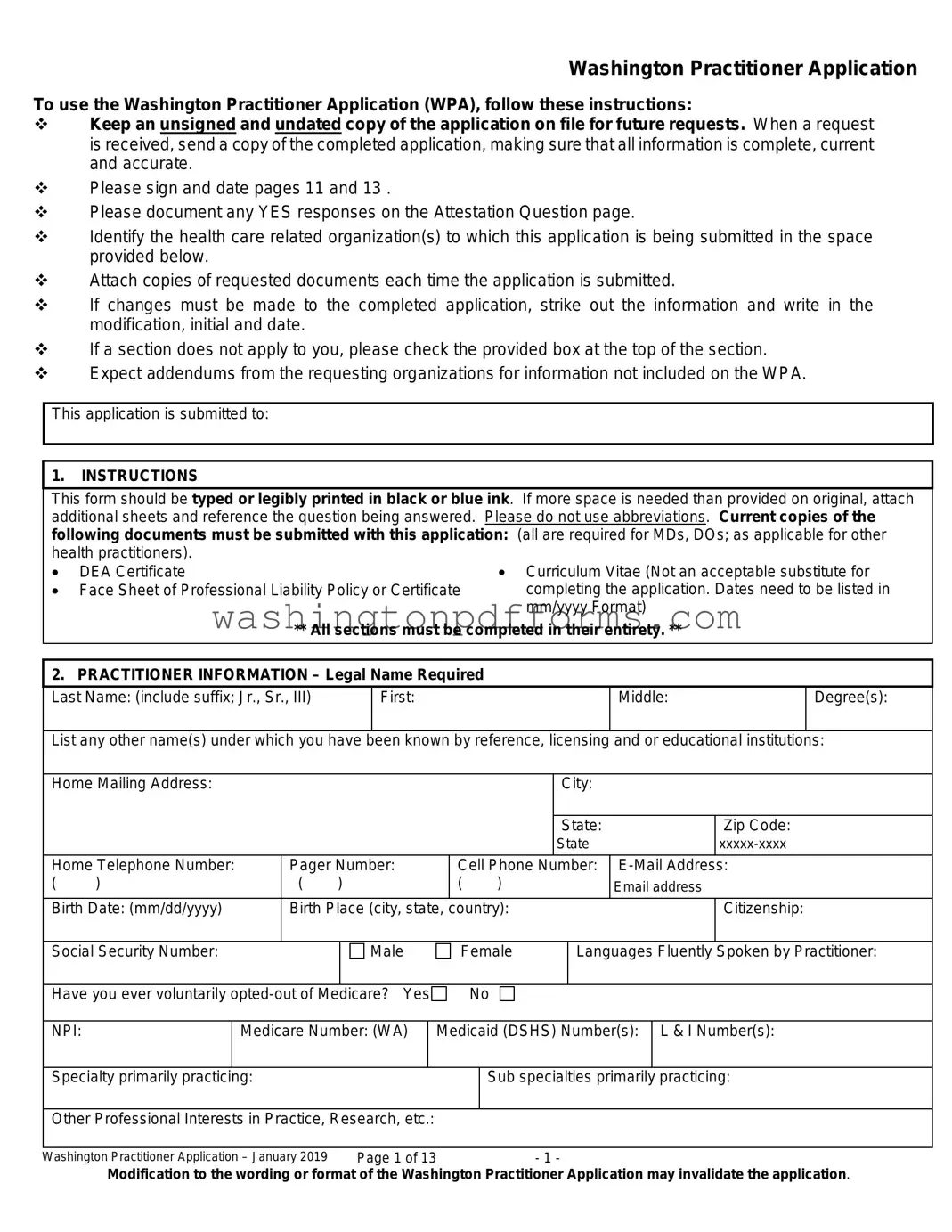Completing the Washington Practitioner Application form can be a straightforward process, but many applicants make common mistakes that can lead to delays or complications. One significant error is failing to provide a complete Curriculum Vitae (CV). While a CV is essential, it does not replace the need to fill out the application in full. All sections must be completed, and any missing information can result in a rejection of the application.
Another frequent mistake is neglecting to follow the date format specified in the application. Dates should be listed in the mm/yyyy format. If an applicant uses a different format, it can create confusion and may lead to processing issues. Consistency is key, and adhering to the specified format is crucial for clarity.
Many applicants also forget to sign and date the required pages. Pages 11 and 13 must be signed and dated to validate the application. An unsigned application may be considered incomplete, causing unnecessary delays in processing.
Some individuals fail to document any "YES" responses on the Attestation Question page. If there are affirmative answers, it is essential to provide detailed explanations. This oversight can raise red flags during the review process, potentially resulting in further inquiries or complications.
Additionally, applicants often forget to attach the necessary documents each time they submit the application. Required documents, such as the DEA Certificate and the Face Sheet of the Professional Liability Policy, must accompany the application. Missing these documents can lead to significant delays in the approval process.
Lastly, many applicants overlook the importance of checking boxes for sections that do not apply to them. If a section is not relevant, it is crucial to indicate this clearly. Failing to do so can make the application appear incomplete or confusing, which may hinder the review process.
